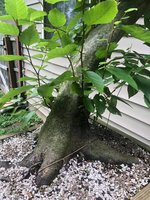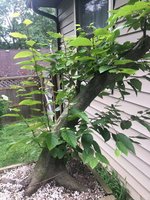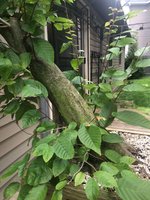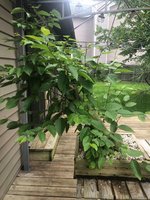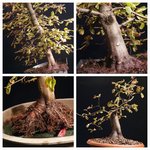One First Matter All
Mame
Hi all,
I purchased this collected American hornbeam last weekend from a local bonsai enthusiast (and a great guy!). He said the tree has been in the box for two years (meaning, this is its third summer). I think the trunk is a bit too long, and I would like to cut it back. I saw another recent post addressing deciduous chops, and, rather than hijack that post, I figured I would just make a post of my own. I plan to consult with the collector, as well, once I get the chance (or if you're out there, feel free to weigh in).
Any advice on if and where to make the chop? I've marked in red where I think a chop might go to bring some proportion to the tree. However, as you can see, the new leader would appear behind the trunk if I performed this chop, assuming this angle remains the front (which it likely will).
Also, when should I perform this chop? And while we're at it, how? As in, what tool should I use? Does an ordinary handsaw work ok? Thanks in advance!

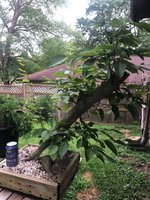
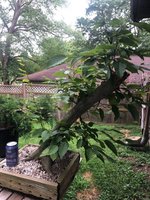
I purchased this collected American hornbeam last weekend from a local bonsai enthusiast (and a great guy!). He said the tree has been in the box for two years (meaning, this is its third summer). I think the trunk is a bit too long, and I would like to cut it back. I saw another recent post addressing deciduous chops, and, rather than hijack that post, I figured I would just make a post of my own. I plan to consult with the collector, as well, once I get the chance (or if you're out there, feel free to weigh in).
Any advice on if and where to make the chop? I've marked in red where I think a chop might go to bring some proportion to the tree. However, as you can see, the new leader would appear behind the trunk if I performed this chop, assuming this angle remains the front (which it likely will).
Also, when should I perform this chop? And while we're at it, how? As in, what tool should I use? Does an ordinary handsaw work ok? Thanks in advance!




